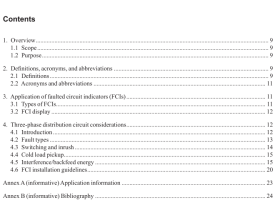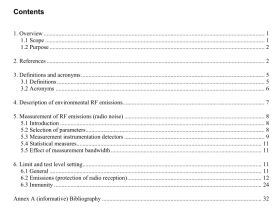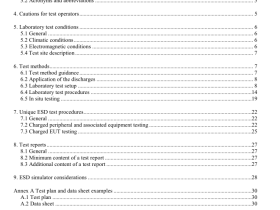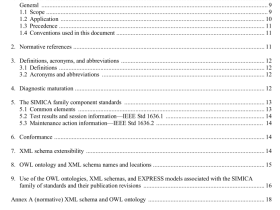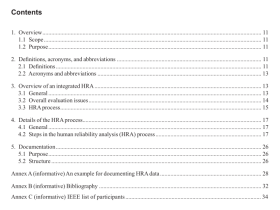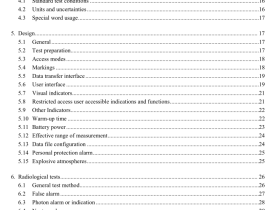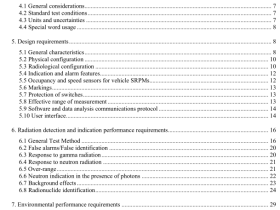IEEE Std 2720 pdf download
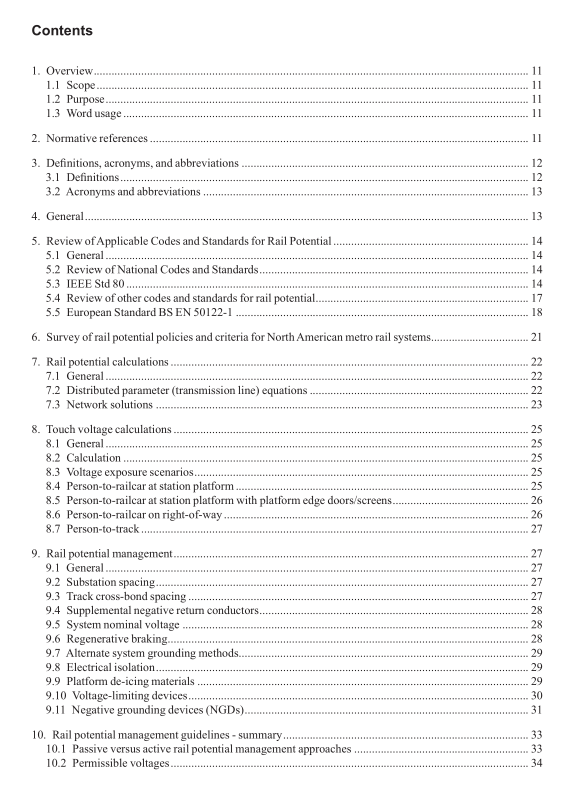
IEEE Std 2720 pdf download IEEE Guide for Rail Potental Management for DC Electrifcaton Systems
5. Review of Applicable Codes and Standards for Rail Potential
5.1 General Rail potential can cause voltages to occur on metallic railway infrastructure that may be accessible to railway workers and the public. For example, since the metallic shells of rail vehicles are typically at the same voltage as the wheels and rails, a voltage difference could be impressed on a passenger entering or exiting a train from a grounded platform. Alternatively, persons may contact metallic infrastructure near the tracks that has elevated voltages due to rail potential, or they may directly contact the tracks or metallic equipment connected to the tracks.
If the contact does not create a difference in voltage across the body (hand-to-hand, hand-to- feet, foot-to-foot), then the voltage does not present a hazard. However, if a significant voltage difference is impressed across the body, potentially dangerous electric currents could flow through the heart as a result. The eff ects of an electric current that passes through the vital parts of the human body depend on the duration, magnitude, and frequency of the current. The most dangerous result of an exposure to this current is a heart condition known as ventricular fi brillation. Ventricular fi brillation results in an immediate arrest of blood circulation. Although it is a current fl ow that causes this condition, the current fl ow through a person’s body is a response to a voltage diff erence between two locations on the person’s body. The resulting current fl ow is proportional to the equivalent resistance of the human body and the magnitude of the voltage diff erence across the body, or “body voltage”, in accordance with Ohm’s Law (body current = voltage diff erence/body resistance). For this reason, codes, and standards for the design of electrical facilities specify maximum permissible voltages, usually referred to as “touch” or “step” voltages.
5.2 Review of National Codes and Standards IEEE Std 80 7 , IEEE Guide for Safety in AC Substation Grounding, is the standard commonly referenced in the USA for the design of electrical facility grounding. Although other US standards and codes such as the National Electrical Code, the National Electrical Safety Code, and IEEE Std 142, IEEE Recommended Practice for Grounding of Industrial and Commercial Power Systems, address grounding methods and requirements, only IEEE Std 80 establishes safe limits for potential differences (tolerable voltages) between points that can be contacted by the human body. Since no other National standards or codes establish safe voltage limits at the present time, only IEEE Std 80 is addressed in this guide.
5.3 IEEE Std 80 IEEE Std 80 was developed as a guide for ac substation design and does not address dc. One of the purposes of this standard, as described in 1.2 (Purpose) in IEEE Std 80-2013, is to stablish, as a basis for design, safety limits of potential differences that can exist in a substation under fault conditions between points that can be contacted by the human body. The safe limits of potential differences are termed “tolerable voltages”, which are expressed in terms of touch voltage and step voltage. Touch voltage in IEEE Std 80 is the voltage between one hand and both feet, including the effects of the resistance between the feet and remote earth (refer to Annex A for the equivalent circuit). Touch voltage as defined in IEEE Std 80 is therefore not the same as “body voltage”, which is the voltage across the body alone. Touch voltage as defined by IEEE Std 80 is always higher than the body voltage for hand-to-feet contact scenarios. The potentially hazardous current flow through the body is determined by the body voltage rather than the touch voltage as defined in IEEE Std 80. Touch voltage as defined by IEEE Std 80 is often referred to as “prospective touch voltage”.
